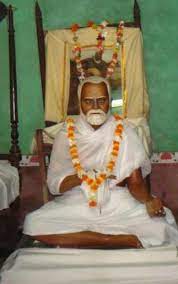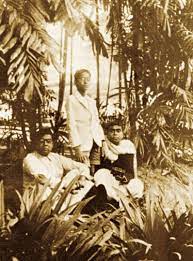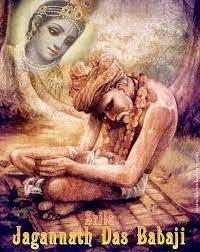HH Chandramauli Swami – Sravana Utsav 2023, Day 4
→ Dandavats
Read More...
Websites from the ISKCON Universe
“Wandering in Navadvipa is the best of all opulence, the best of all religious principles, the best of all kinds of worship, the best of all perfections, the best of all glories, and the best of all oceans of sweetness.”Parikrama begins today the 23rd of February and will return back on the 1st of March.This […]
The post Navadvipa Mandala Parikrama Seva Day 1 appeared first on Mayapur.com.
Podcast:
Transcription:
Question: Can be invest in Mutual funds? Does that involve breaking the regulative principle of no gambling?
Answer: In today’s world, Where things are often newanswered complex. How do we translate these regulator principles into daily life is something which is not written in black and white. Rather than focusing on the What we should not do? We can focus more on What is the underlying purpose or the underlying principle? And the underline principle here is greed. Gambling is problematic primarily because It involves seeking some benefit without putting in any endeavor.
From that any significant proportionate endeavor we can say again I learnt gambling. I’m expert in gambling. But that’s not exactly proportional to the hard work by which one gets returns.
So, If we are not driven by the motive of greed if we have genuine financial concerns and we are trying to responsibly address those concerns and if we have the financial expertise in the maturity to invest thoughtfully wisely then the fear of the regulative principle itself need not be what stops us from going ahead.
Some of us may be innately risk-averse and if that started position then we don’t have to deliberately take risk going against our disposition but we also have to deal with our responsibility, so maybe you have to find out some other way to deal with our responsibility. So the key principle is that focus on ensuring that greed is not being nurtured and the boundary of what comprises the regular principle may be a little porous or blurred now is it that We will get some further bad karma by doing this and better to tolerate and live in financial difficulty. That’s one way to go.
At the same time we may have to look at ourselves, honestly and look at our family situation honestly and evaluate what is going to cause us greater agitation us and of course those whom we are responsible for. We may decide that I’ll just tolerate this as past karma and leave through it but while tolerating if you are constantly lamenting resenting venting. As sometimes exploring at others or sometimes just dreading privately then all that is itself a significant distraction from Krishna for us. So, for it’s not that tolerating past karma tolerating our present challenge difficulties, as we have exhausting our past karma is a primary priority. Our primary priorities to serve Krishna to focus on Krishna and do our various responsibilities in the mood of service to Krishna. So if We find that this service is being impeded the remembrance is being impeded so by what is being impeded more.
By moving forward and taking over responsibility or by not taking up the responsibility. And tolerating but resenting so thereby that we can decide
Anukulasya sankalpa pratikulasya varjanam – what is favorable accepted, what is unfavorable avoided.
It is not that because this world is the dukhalaya, the place of distress and because we are ultimately meant ot attain Krishna that means we just simply passively tolerate any and every distress. The focus is not on just tolerating distress the focus on sticking to our duty. Krishna tells Arjuna the world is dukhalaya but Krishna doesn’t say that tolerate Kaurava’s injustice as dukhalaya. No you are a Ksatriya you have to establish dharma in the world and for that purpose whatever is required you need to do that.
So similarly we have to consider what is our dharma? If we are in family responsible situation and taking care of our family is our dharma. We can do it in the Christian conscious way, but it has to be done. And when we do it responsibly if we will grow by that. And we shouldn’t reduce Krishna consciousness only to devotional activities. Krishna consciousness is attitude of service and responsibility for doing what is required for our service to Krishna.
So maybe we can pray write down our thoughts and then we can pray to Krishna, offering our thoughts to him and then seek guidance for a mature decision about how to deal with the situation but this is situation should not be dealt with simply by like a one track approach based on one teaching from scripture, that is the best to tolerate past karma.
No the purpose of scripture is ultimately to increase our remembrance of Krishna and that means increase also the remembrance of Krishna of those who are around as those who are those for whom we are responsible. Srila Prabhupada worked himself very hard to take care of his family financially and though eventually he took sannyas but later when his family was in severe trouble. He even as a sannyasi he arranged for some funds to be available for his family when they were in great difficulty. What then to speak of and we are grhastas and we have family we have small children.
So, Krishna consciousness means to be conscious that our relationship with Krishna manifests in multiple ways. So we may endure but in enduring the difficulties if our family starts becoming resentful and they start thinking that we are passive and irresponsible and they start thinking that we are all these because of our Krishna consciousness then we may be ending up in the name of furthering our Krishna consciousness being violence to their Krishna consciousness.
So just like company takes a decision with all the stakeholders involved so we need to take a decision with our family involved and thereby move forward in a mature way.
Thank you.
End of transcription
Dear Godbrothers and Godsisters please accept my humble obeisance all glories to Gurumaharaj, all glories to Shantipur festival. This is to inform all of you of the coming Shantipur festival on 4th March 2023. We humbly request you to donate any amount for the organization of the biggest prasadam distribution program ever at Shantipur, the […]
The post Shantipur Festival Seva Opportunity 2023 appeared first on Mayapur.com.
Podcast:


Srila Jagannath Das Babaji Maharaj appeared in this world (was born) probably around 1750 in a village in a part of India which is now Bangladesh. He was born in a wealthy family.
Later in his life he was initiated by Jagadananda Goswami. His guru was in the line of Srila Baladeva Vidyabhusana. One of our very great Acharyas.
Srila Jagannath Das Babaji was a perfect devotee. In the holy place, Vrindavan, he had a little hut, a bhajan kutir. He would sometimes chant there for three days and nights, without stopping. He wouldn’t even eat or sleep.
He was very famous, everyone knew what a perfect devotee he was.
In 1880, Srila Bhaktivinoda Thakur came to Vrindavan and met him for the first time. Srila Jagannath Das Babaji taught Srila Bhaktivinoda Thakur many things. Srila Bhaktivinoda Thakur arranged to work close by where Srila Jagannath Das Babaji lived, so he could visit him often. Srila Jagannath Das Babaji was very pleased to see Srila Bhaktivinoda Thakur’s enthusiasm for preaching the Holy Name of Krishna.
Srila Bhaktivinoda Thakur had been looking for the exact birthplace of Sri Chaitanya Mahaprabhu for quite some time. He was chanting one day on the roof when he all of a sudden saw an unusual light across the River Ganges. It was so bright, he couldn’t ignore it.
This was the sign he had been waiting for, for so long. After a long investigation he found the spot. Only Tulasi plants would grow there and the Muslim people who lived there were scared because they saw light and heard sounds coming from that spot. They decided to stay away from that place.
Then Srila Bhaktivinoda Thakur asked his spiritual master, Srila Jagannath Das Babaji Maharaj to come to that spot.
He was already very old at that time and his personal servant, Bihari Das, would carry him in a basket on his back, because he couldn’t walk anymore. But when he arrived at the spot, Srila Jagannath Das Babaji jumped up in the air and began to dance ecstatically while calling the Names of the Lord loudly.
The holy birthplace, the Yogapitha, of Sri Chaitanya Mahaprabhu was finally found!
On the banks of the holy River Ganges, Srila Jagannath Das Babaji used to do bhajan (singing and chanting the Holy Name of the Lord). You can still find his bhajan-kutir (little hut/house) there and his Samadhi, his tomb.
Srila Jagannath Das Babaji also ordered Srila Bhaktivinoda Thakur to build a hut close to his bhajan-kutir, so the devotees could stay close by.
Srila Jagannath Das Babaji stayed in this world for about 125 years. He was always talking, singing and chanting the Holy Name and telling everyone about his Lord, Sri Chaitanya Mahaprabhu.

